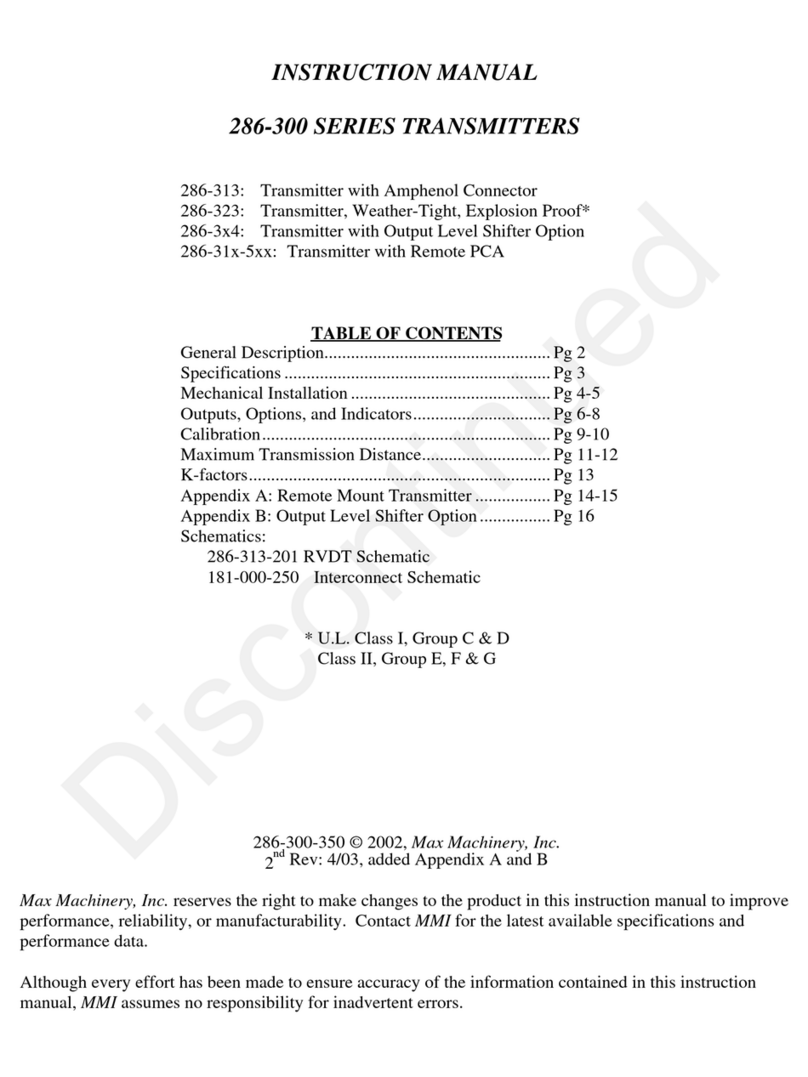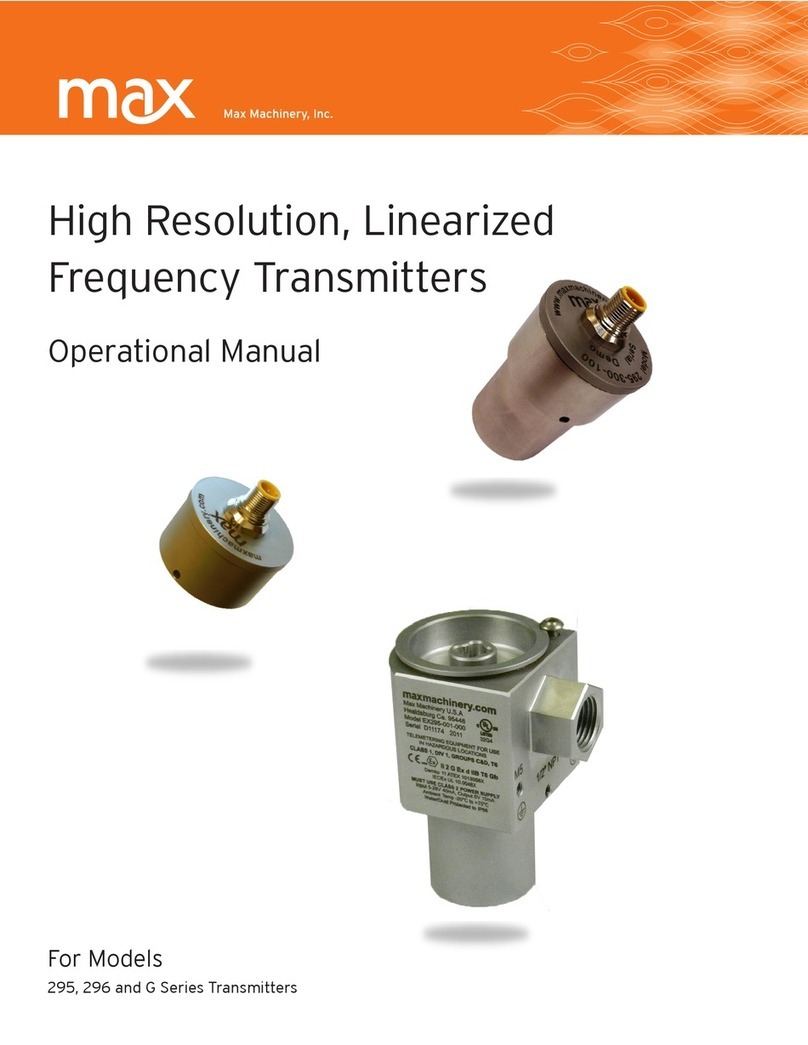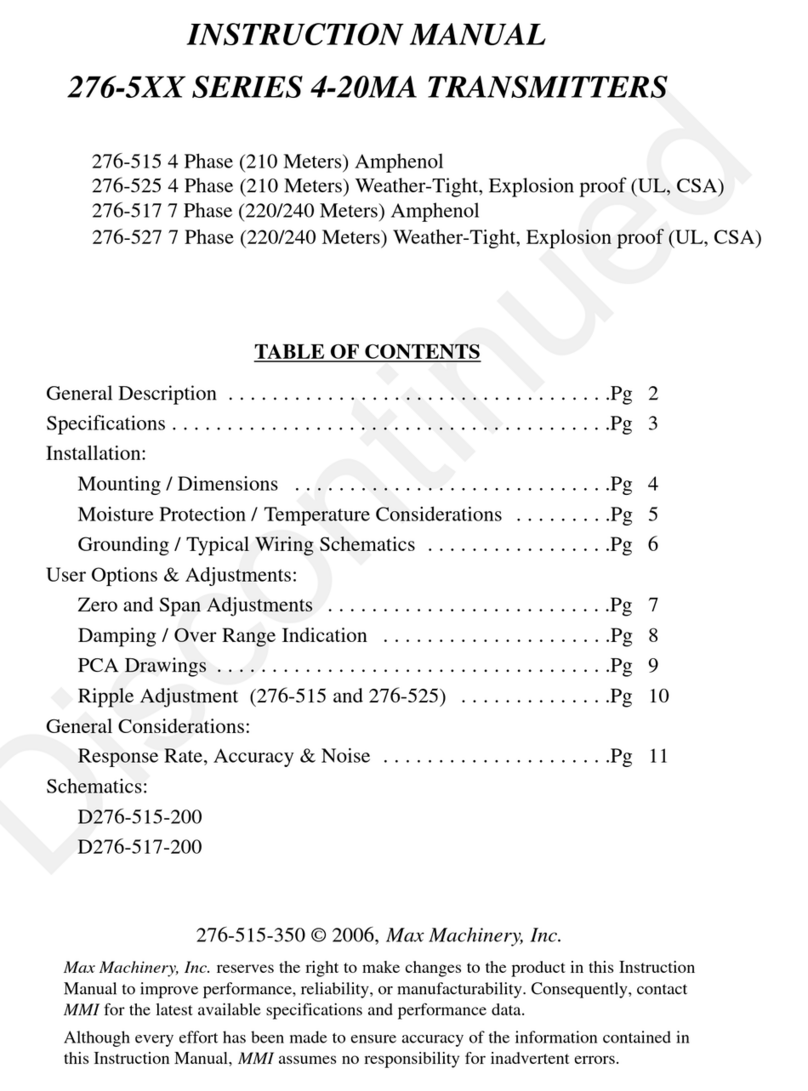
Page 4 284-512-350 © 1990 (Rev 6/97) Max Machinery, Inc.
Installation
Environment: The electrical circuitry of the weather-tight, explosion-proof transmitter is
enclosed in a liquid and vapor tight enclosure. All joints are sealed by welding or by “O”-
rings. If this sealed condition is to be maintained, the conduit connection to the enclosure
should be made liquid and vapor tight by using pipe dope or a potting fitting. If a transmitter
is located outside and this precaution is not taken, moisture may form inside the housing.
This will cause the circuitry to give
an inaccurate output or possibly no
output at all. In the long run it will
cause corrosion and failure. The
amphenol connector versions of the
284 offer moderate protection from
moisture and dust, but are not totally
sealed.
The transmitter may be rotated by
loosening the screws under the
housing (see drawing on Page 5).
Connections: The facing page
shows the terminals and their
functions. When connecting wires to
the screw terminal versions, make
sure the lead wires do not rub on the
arbor. This arbor rotates and rubbing
wires will affect accuracy and may
eventually cause a short circuit.
Grounding: Two dip switches are
provided. The ground switch, when
activated, connects the circuit
common to the case terminal. The
Filter switch, when activated,
connects the circuit common to the
case via two back to back capacitors.
These two switches facilitate system
grounding procedures which will reduce electrical noise problems.
It is advisable to have the common of any system physically grounded at one point only. If
your system is grounded at the receiving end then you may not want to ground the common
at the transmitter end. In this case, it is advantageous to connect the circuit common to case
via the capacitors (filter). This will give some extra immunity to electrical noise.
Installation






























